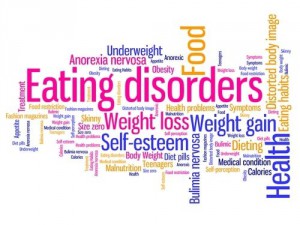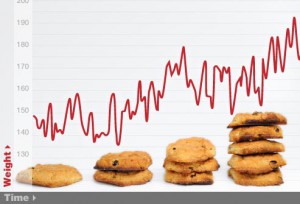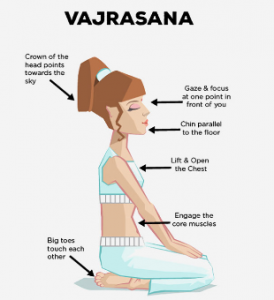
DO YOU look in the mirror and pick yourself apart? Do you constantly worry about what and how you look?
Ask yourself, “What percentage of your time in a day you are preoccupied with thoughts regarding food, weight, and body image?”
If your answer is that you spend so much time with these concerns that it interferes with your happiness and daily functioning, then let me tell you that you may be having an Eating Disorder.!
What Is an Eating Disorder?
Eating Disorders are illnesses that cause serious disturbances in a person’s everyday diet. They are characterized by irregular eating habits which include inadequate or excessive food intake which can damage individual’s well-being.
In addition to abnormal eating patterns, there are severe distress or concern about body weight and shape. An Eating Disorder also includes your beliefs about food and how they impact your body.
Who Suffers From Eating Disorder?
Eating disorders can develop during any stage in life but typically it appears during teen years or young adulthood but, may also develop in childhood. It can affect both men and women, however, it’s more common in women.
Eating disorder when manifested at a young age can cause severe impairment in growth development, and overall mental and social well- being.
Let’s move on to knowing three most common types of Eating Disorders
ANOREXIA NERVOSA
The Term Anorexia Nervosa literally means “Lack of Appetite induced by Nervousness”
This is perhaps the best- known eating disorder. It causes its sufferers to excessively fear to be overweight and restrict their eating habits in an unhealthy, dangerous way which leads to a significantly low body weight.
Male and female suffering from Anorexia show following hallmarks
- Extremely limited food intake
- Obsessive intense fear of weight gain
- Problems with body image (Unrealistic perception of the body) and a low self-esteem
- Denial of low body weight
Overtime, the following symptoms may develop as the body goes into starvation
Physical symptoms
- Menstrual cessation
- Osteopenia or osteoporosis(Thinning of bones)
- Anaemia
- Fatigue
- Brittle nail and hair
- Skin dries and can take on a yellowish cast
- Severe constipation, Low BP
Emotional and behavioural symptoms
- Excessive/Compulsive exercising
- Frequently skipping a meal or refusing to eat
- Denial of hunger
- Frequent checking in the mirror for ‘perceived’ flaws
- Flat mood(Lack of emotion)
- Low self-esteem
- Irritability
- Low sex drive
BULIMIA NERVOSA
The Greek word for Bulimia is BOULIMIA which means extreme hunger. Patients with bulimia nervosa eat frequently in a discrete period of time (example within any 2 hour period) they also have a sense of lack of control over eating during the episode.
They often consume thousands of calories that are high in sugars, carbohydrates and fats. They can eat rapidly, sometimes gulping food without even tasting it.
After a binge, they PURGE their bodies of food and calories they FEAR by using laxatives, enemas, diuretics, vomiting or by excessive exercise. People with Bulimia can be underweight, overweight or even obese.
Many people don’t know when a family member or friend has Bulimia nervosa because they almost always hide their binges but Bulimia nervosa does have symptoms that should raise red flags:-
Physical Symptoms
- Chronically inflamed or a sore throat
- Salivary glands in the neck and below jaw bone swollen; cheeks and face often become puffy
- Tooth enamel wears off and begins to decay from exposure to stomach acids
- Constant vomiting causes GERD (Gastro oesophagal reflux disease)
- Laxative and Diuretic abuse cause kidney and intestinal problems
- Frequent Severe dehydration from purging of fluids
Emotional and Behavioural symptoms
- Negative/distorted self- image
- Hoarding or hiding food
- Social withdrawal
- Extreme guilt and sadness
- Excessive worry about body weight and shape

BINGE EATING DISORDER
It is a form of compulsive OVEREATING. Sufferers feel a compulsion to eat large amounts of food and as though they cannot stop and UNLIKE PEOPLE WITH BULIMIA, THEY DO NOT TRY TO PURGE OR GET RID OF FOOD BY INDUCING VOMITING AND BY USING OTHER UNSAFE PRACTICES.
Symptoms are more or less similar to Bulimia nervosa except for purging and laxative abuse.
Binge eaters eat a large amount of food when not feeling physically hungry, binge eating episodes typically take place in private and can last for hours or a whole day. It is common for sufferers to feel distressed or guilty about their lack of control, it is this shame and guilt that can prevent a person from talking and seeking help.
CAUSES
Eating disorders are complex thus are influenced by a facet of factors. Though the exact cause is unknown, it is generally believed that a combination of biological, psychological, and/or environmental abnormalities contribute to the development.
Certain psychological, biological/genetic, and personality traits may predispose people to develop eating disorders.
However specific traits are linked to each of the disorders. People with Anorexia tend to be perfectionists and with bulimia and binge eating disorder impulsive nature is common. Hormonal irregularities and nutritional deficiencies can be among causes. As discussed earlier in this blog, negative body image, dissatisfaction with one’s body and low self-esteem can help build tendency towards abnormal eating patterns.
Among Socio-cultural factors, the media has the largest influence on people especially teens and young adults. The media pushes body image, clothes, fast food and weight loss with unrealistic results, the combination of all these lead teens and young adults down the road to eating disorders and a confusing self- image.
And on another side of continuum popular social media pages and videos with a variety of recipes and restaurants tempt people to eat more and more.
Other causes include disruptive thinking patterns and an inability to understand the healthy relationship between food and hunger, family dysfunctions and major life stressors/changes, negative emotions or traumas such as rape, childhood sexual abuse or death of loved ones can also trigger eating disorders.
Even a happy event, such as giving birth can lead to an eating disorder because of the stressful impact of the event on an individual’s new role and body image.
IMPORTANCE OF TREATMENT
Eating disorder untreated can have serious consequences like Malnutrition, stunted growth, osteoporosis, reduced metabolic rate, critically low blood pressure, serious heart, kidney and liver damages, obesity, diabetes (TYPE 1 AND 2), depression, anxiety, obsessive-compulsive disorder and substance abuse, cardiac arrests and even death!
Remember, the sooner the treatment starts, the better it is. The longer abnormal eating patterns continue the more deeply ingrained they become and more difficult to treat.
EFFECTIVE TREATMENT METHODS
- PSYCHOTHERAPY
- Cognitive Behaviour Therapy is a therapy focussing on the beliefs, values, maladaptive cognitive processes and negative emotions which are associated with meaning of weight, shape and appearance, it aims at reducing destructive eating patterns and restoring a healthy relationship with food. Psychologists identify important issues associated with causes of destructive eating habits and develop CBT plan respectively.
- Dialectical Behavioural Therapy is a form of psychotherapy that helps to cope with painful emotions. The focus is on individuals who react to emotional circumstances with extreme behaviours. Weekly sessions help a person with Eating disorder practice mindful eating, distress tolerance and emotional regulation which focus on identifying barriers to changing emotions to constructive ones and to increase positive emotional events.
- Incorporating Family, Group and Marital Therapy: This can be helpful in addressing the underlying causes of eating disorders and help prevent relapses by resolving interpersonal issues which are related to eating disorders.
- Nutritional Counselling: This would involve a nutritionist’s guiding plan through weight restoration and stabilization, guidance for normal eating by keeping a food journal which includes type of food, amount, benefits, feelings thoughts associated with intake of food and drink, it also includes which binge foods are to be avoided. The inclusion of individualized meal plans for specific patients to improve nutritional intake is created.
- Medication: Some patients with Bulimia Nervosa benefit from placebo or anti- depressants. But, medication should always be paired with psychotherapy and nutritional counselling.
A holistic approach involving all above methods/ways with an experienced team of caregivers and healthcare professionals can help patients suffering from eating disorder regain control of their eating behaviour and their lives!
Good Health is more than just being free from disease or injury. A healthy lifestyle helps you feel good, have a vibrant energy and maintain a positive outlook on life thereby contributing to your physical, mental, social well- being. Your mental health is as important as physical health and work hand-and-hand. Letting go of your eating disorder is one of many ways to move towards good health!





